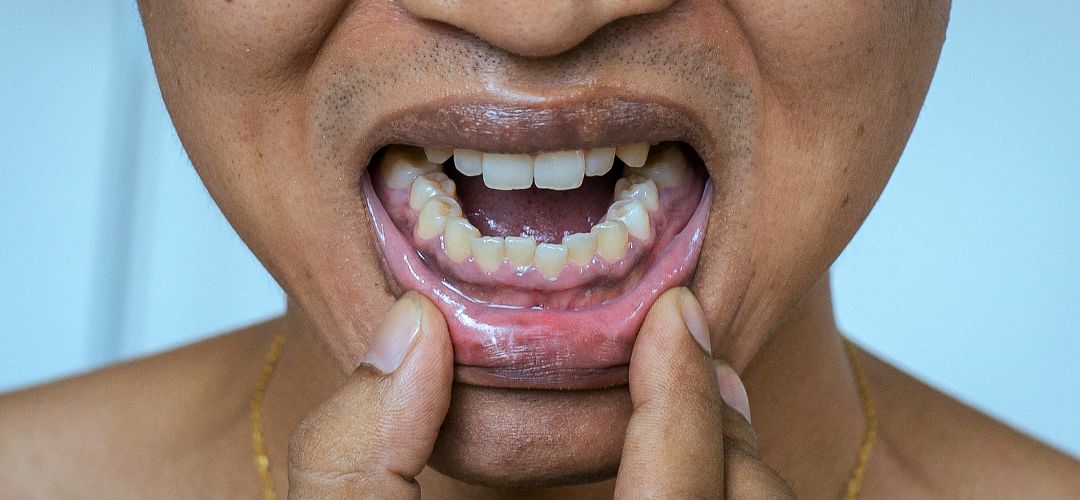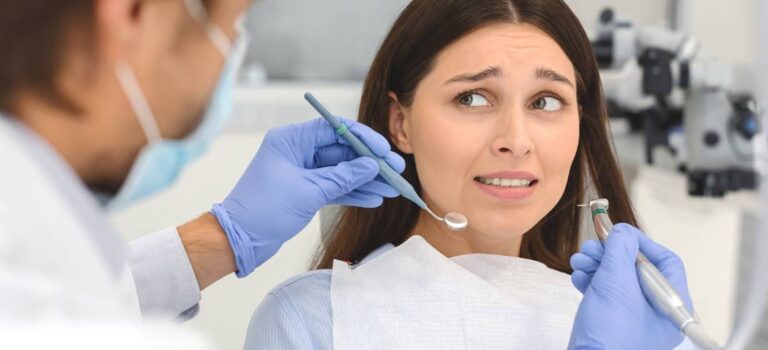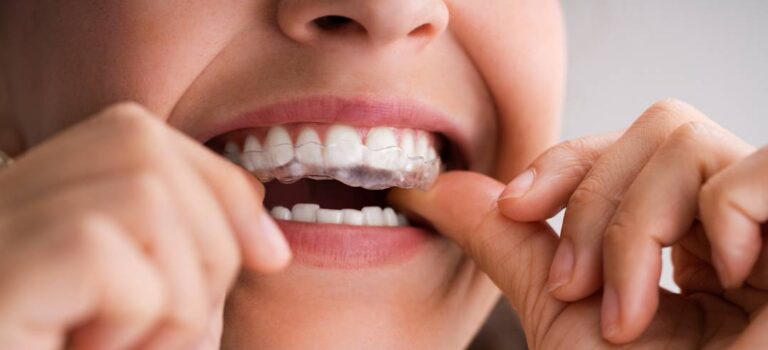Gingivitis is the earliest stage of gum disease, characterized by inflammation and irritation of the gum tissue. If left untreated, it can progress to more severe forms of periodontal disease, potentially leading to tooth loss and other serious oral health problems. Recognizing the early signs of gingivitis is crucial for prevention and treatment.
What Is Gingivitis?
Gingivitis typically develops when plaque, a sticky film of bacteria, accumulates on the teeth and gum tissue. This plaque-induced gingivitis can cause the gums to become red, swollen, and prone to bleeding. Poor oral hygiene is a significant risk factor for developing gingivitis, but other factors, such as smoking, crooked teeth, certain medications, and health problems like diabetes, can also contribute.
Early Signs & Symptoms Of Gingivitis
Recognizing early gingivitis symptoms is key to preventing the progression of gum disease. Some of the most common signs to watch for include:
- Red, swollen, or puffy gums.
- Bleeding gums, especially during brushing or flossing.
- Persistent bad breath or a bad taste in the mouth.
- Tenderness or sensitivity in the gum tissue.
- Receding gums or changes in gum appearance.
- Soft or spongy gums that easily bleed.
These gum inflammation indicators serve as oral health warning signs that a more serious problem could be developing if not addressed promptly.
Importance Of Early Detection & Prevention
Early detection of gingivitis through regular gum health assessment can help prevent the disease from progressing to more severe stages, such as periodontitis. If caught early, gingivitis can be reversed with proper oral hygiene and professional dental cleaning.
- Practice good oral hygiene by brushing twice daily and flossing regularly to remove plaque and keep gums clean.
- Use anti-gingivitis toothpaste to help reduce plaque and prevent gum inflammation.
- Schedule regular dental cleanings and check-ups with a dental professional for early gum disease detection.
- Avoid smoking and maintain a healthy lifestyle to reduce the risk of gum disease.
Key Oral Health Habits For Gingivitis Prevention
Preventing gingivitis starts with good oral hygiene.
- Brush your teeth twice daily with fluoride toothpaste.
- Floss at least once a day to remove food particles and plaque between teeth.
- Use an anti-gingivitis mouthwash.
- Schedule regular dental check-ups.
- Avoid tobacco products.
Seeking Professional Help
If you notice any early symptoms of gingivitis, it’s important to see a dentist for a comprehensive gum health assessment. A dental professional can evaluate your gum tissue and recommend appropriate gingivitis treatment options, such as professional cleanings, scaling, and root planing.
These treatments help remove plaque and tartar from the tooth and root surfaces, reducing inflammation and promoting healing.
When to See a Dentist
- If you experience persistent gum inflammation, bleeding, or other oral health warning signs.
- If you notice receding gums, changes in gum appearance, or ongoing bad breath.
- If you have a history of gum disease or other risk factors like diabetes or smoking.
What Does A Gum Health Assessment Include?
A professional gum health assessment involves a thorough examination by a dental professional. This assessment is an important part of your bi-annual dental exam.
- Measuring the depth of gum pockets.
- Checking for signs of gum recession.
- Examining gums for inflammation or bleeding.
Risk Factors For Gingivitis
Certain risk factors can increase the likelihood of developing gingivitis. If you have any of these risk factors, you should talk to your dentist to see if you require more frequent check-ups.
- Poor Oral Hygiene
- Diabetes
- Smoking Or Tobacco Use
- Hormonal Changes, Such As Pregnancy
- Medications That Affect Gum Health
Your Partner In Oral Health
Recognizing the early signs and symptoms of gingivitis is essential for preventing the progression of this common condition. By prioritizing good oral hygiene, committing to regular dental visits, and taking proactive steps, you can maintain healthy gums and overall oral wellness.
If you are in the San Ramon, CA area and need professional dental care, contact Pro Smile Dental Care today to schedule your comprehensive gum health assessment. Your journey to healthy gums and a bright smile starts here.





